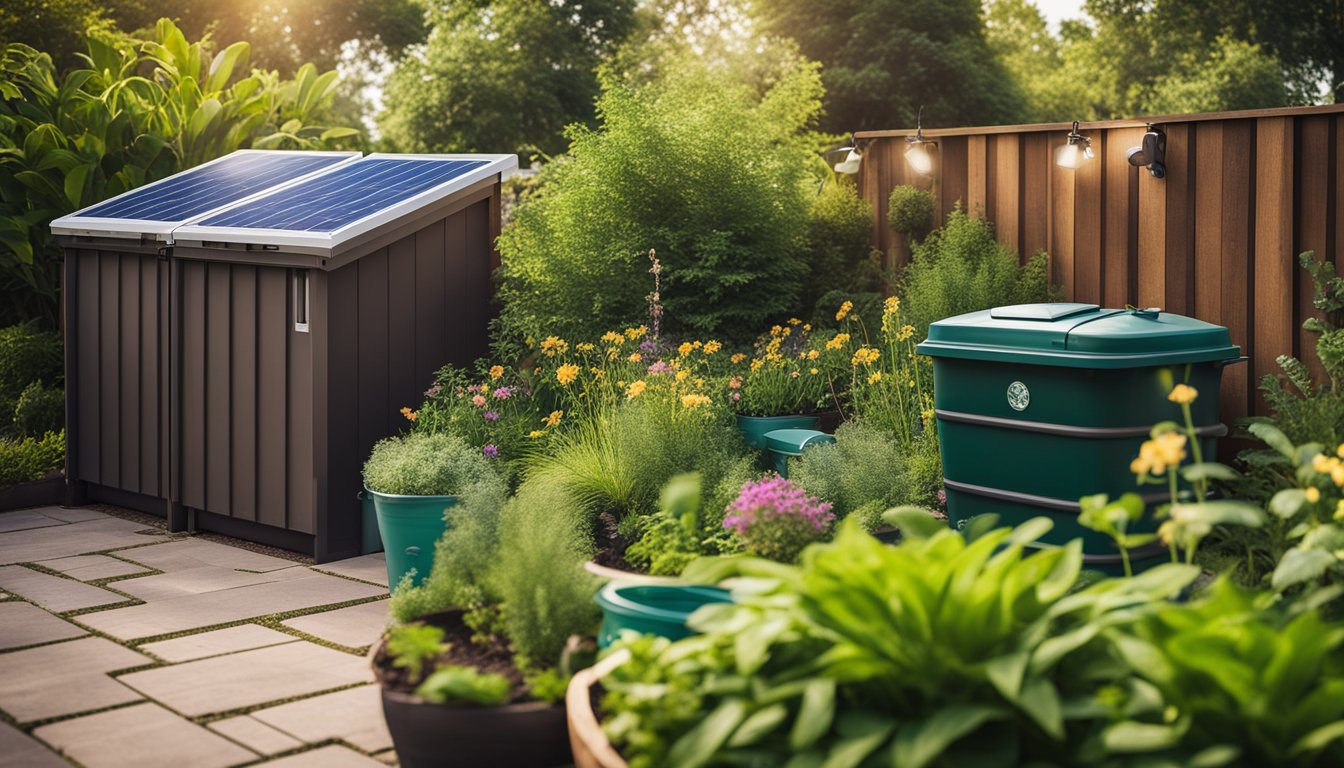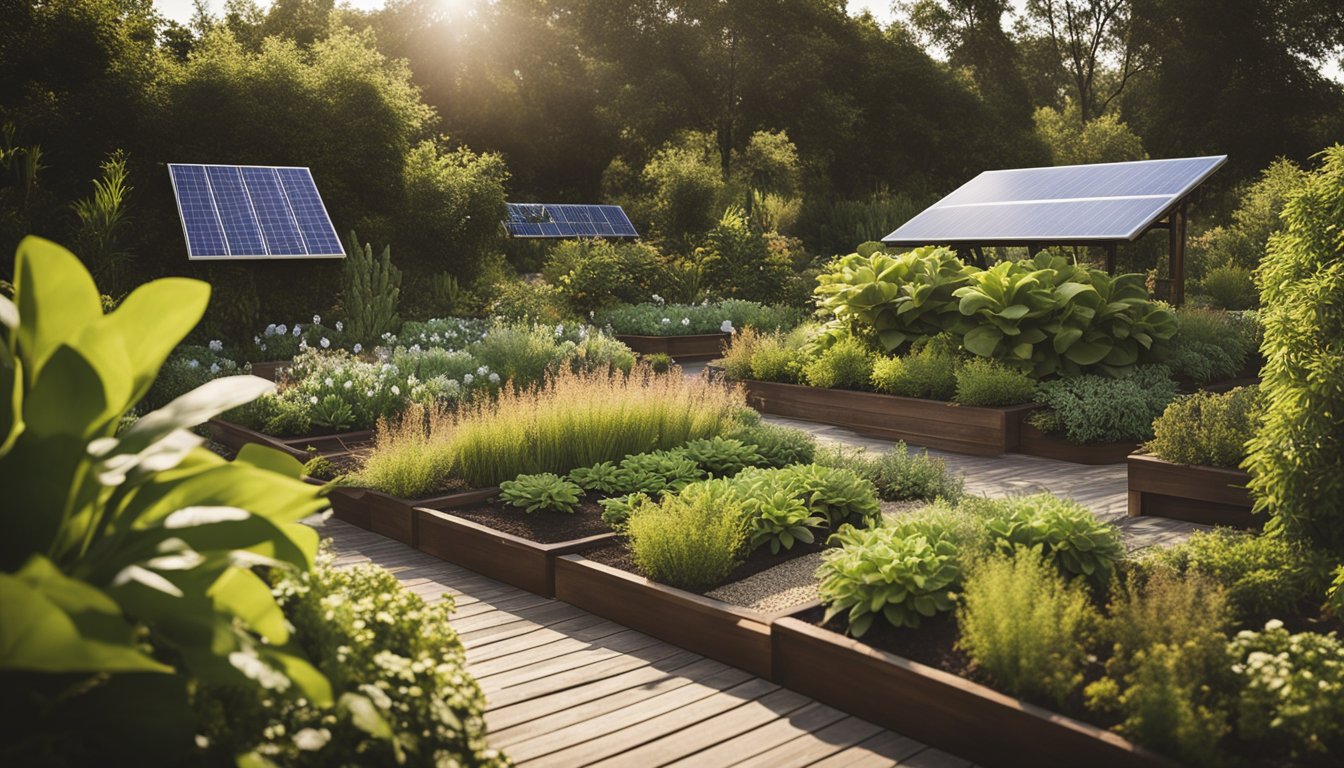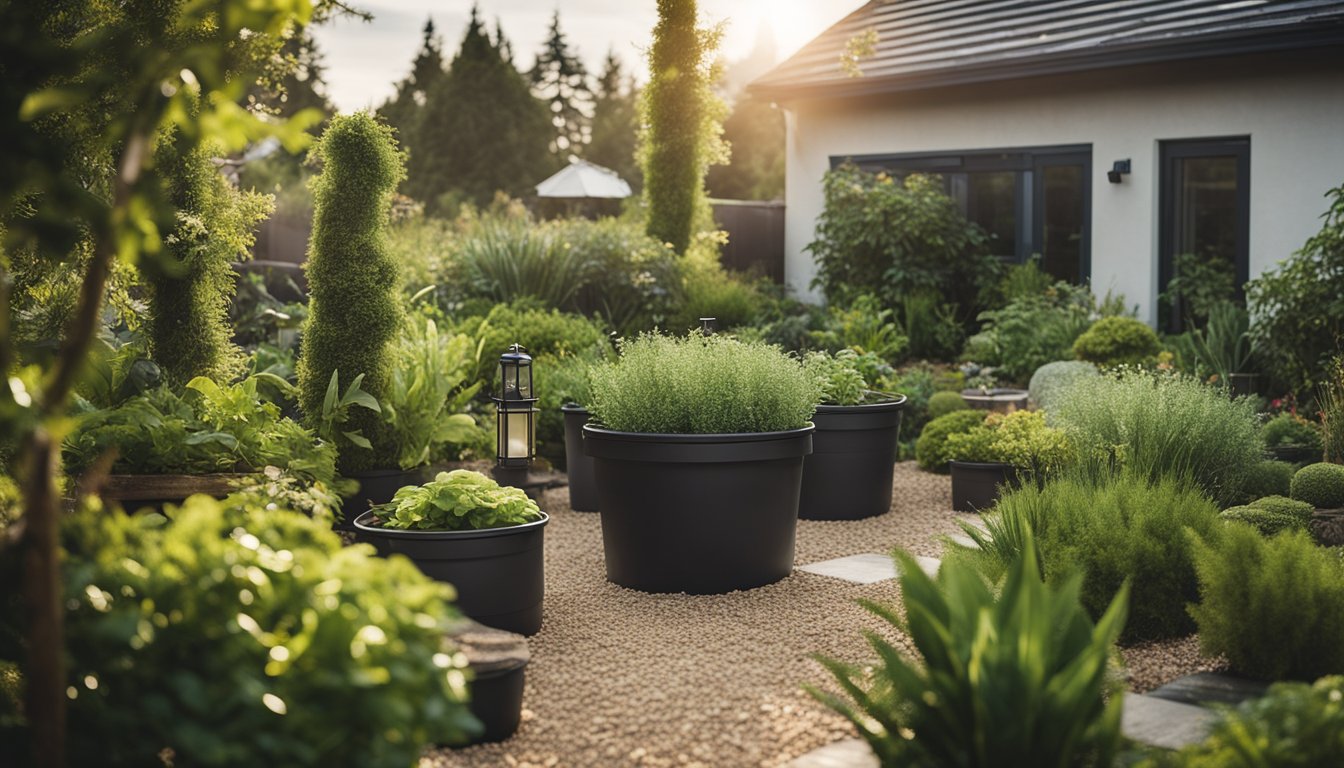Late updated: 07 Apr 2025 13:04
Written by: Daniel Harper
Innovative Eco-Friendly Garden Design Tips for Sustainable Outdoor Spaces
Innovative eco-friendly garden design is captivating more gardeners eager to create beautiful spaces while respecting the environment. By making thoughtful choices, we can cultivate gardens that are both appealing and sustainable. Understanding how simple swaps like using native plants and incorporating water-conserving irrigation can make a significant difference is key.

Our gardens can thrive while supporting local wildlife and reducing our environmental impact. Through strategic planning, we can design spaces that require less water and fewer chemicals. Using organic methods not only enhances the health of our plants but also contributes to a balanced ecosystem.
Exploring innovative techniques enables us to adapt our gardens to changing climates and local biodiversity needs. Whether it’s a small urban garden or a sprawling landscape, there are countless ways to transform our outdoor spaces sustainably. Let’s delve into the methods that make eco-friendly gardening both practical and rewarding.
Key Takeaways
- Plan gardens to integrate sustainable practices.
- Use native plants and organic methods for eco-friendly benefits.
- Enhance gardens with water conservation and wildlife support.
Planning Your Eco-Friendly Garden
In designing an eco-friendly garden, we need to focus on understanding the intricacies of local ecosystems, selecting appropriate native plants, and integrating sustainable design principles. These considerations enhance biodiversity, conserve resources, and create a harmonious outdoor space.
Understanding Local Ecosystems
Assessing your local ecosystem is crucial in creating a garden that thrives naturally. We must recognise the climate, soil composition, sunlight patterns, and water availability specific to our area. By doing so, we can design a garden that complements and benefits from the natural surroundings.
Consulting with a local landscape architect or environmental expert can provide insights into the specific characteristics of your ecosystem. They can suggest which native wildlife might benefit from particular plant species or garden design elements. This not only supports local biodiversity but also reduces the need for artificial inputs like fertilisers or excessive watering.
Incorporating Native Plants
Native plants are essential for an eco-friendly garden. They are well-adapted to the local environment, requiring less water, fertiliser, and maintenance. By choosing plants indigenous to our area, we can support local wildlife, particularly pollinators such as bees and butterflies, which rely on these plant species for survival.
A diverse selection of native plants can serve as focal points in our garden, adding visual interest while promoting ecological sustainability. Lists of recommended native plants can be sourced from local gardening organisations or online resources focused on regional flora. By integrating these plants, we create a resilient garden landscape that offers both beauty and ecological balance.
Garden Design Principles
Applying eco-friendly design principles involves making mindful choices in materials and layout. Using sustainable materials like recycled wood or stone for pathways and hardscaping elements minimises environmental impact. Water conservation can be addressed through the use of rainwater harvesting systems and efficient irrigation techniques.
Our design should include mulched areas to retain moisture and reduce weed growth. Creating pathways with permeable materials allows rainwater to be absorbed naturally into the earth, reducing runoff and promoting groundwater replenishment. Thoughtfully placed focal points can draw the eye and enhance the aesthetic appeal of our outdoor space, all while maintaining environmentally sound practices.
Elements of a Sustainable Garden

Creating a sustainable garden involves thoughtful selection of plants, efficient use of resources, and intelligent garden design. By focusing on plants that attract pollinators, building vegetable gardens, and implementing eco-friendly drainage methods, these gardens thrive in harmony with nature.
Selecting Plants for Pollinators
To support pollinators such as bees and butterflies, we prioritise growing plants that provide abundant nectar and pollen. Native plants are particularly effective since they are well-suited to local climates and soil conditions. Lavender, phlox, and dianthus are excellent choices for attracting a variety of pollinators. Wildflowers also enhance the diversity of a garden and add vibrant colour.
Including sedum, achillea, and ornamental grasses may further attract beneficial insects. Moreover, climbers and green walls can provide vertical spaces that offer refuge and feeding spots for pollinators. By creating a pollinator-friendly garden, we ensure it contributes positively to the local ecosystem.
Building a Vegetable Garden
Developing a vegetable garden within our outdoor living space allows us to cultivate vegetables sustainably. Choosing a location that receives plenty of sunlight is essential for growing a diverse range of crops. We recommend including raised beds to improve soil structure and drainage while making efficient use of space.
Incorporating companion planting techniques optimises the growth conditions for our crops. Pairing tomatoes with basil or cucumbers with radishes can enhance productivity and pest resistance. By focusing on seasonal vegetables, we align with the natural growth cycles, ensuring a bountiful harvest. A well-planned vegetable garden not only promotes sustainability but also reduces our carbon footprint by cutting down on transported produce.
Implementing Eco-Friendly Drainage Solutions
Effective drainage is critical in ensuring our gardens remain healthy and resilient. Using permeable paving or stones for pathways is an eco-friendly choice allowing rainwater to infiltrate the ground naturally. Retaining walls and rain gardens can manage excess water, preventing erosion and flooding.
Creating gentle slopes and planting drought-tolerant plants like ornamental grasses and sedum can enhance water absorption. Additionally, green roofs and rain barrels provide innovative ways to capture and utilise rainwater. Eco-friendly drainage solutions offer practical ways to manage water sustainably, supporting the garden’s long-term vitality.
Frequently Asked Questions

Our focus is on designing sustainable gardens that are both eco-friendly and stylish. We explore planting methods to reduce environmental impact, suitable materials for landscaping, and sustainable urban practices. We also touch on how schools can utilise gardening as an educational tool for ecological responsibility and the health benefits for the garden and ecosystem.
How can one create an environmentally conscious garden design that's both sustainable and stylish?
Creating a garden that is both sustainable and stylish starts with selecting native plants that require less water and maintenance, which can help preserve the local ecosystem. Incorporating elements like vertical gardens and companion planting can enhance aesthetics while promoting biodiversity.
What are some sustainable planting strategies for reducing environmental impact in gardens?
Sustainable planting strategies include using organic growing methods, such as composting kitchen waste to enrich the soil. By opting for drought-tolerant or native plant species, we can significantly reduce water usage. Companion planting is also effective in naturally deterring pests without the need for harmful chemicals.
Which materials are considered the best for eco-friendly landscaping?
For eco-friendly landscaping, using reclaimed wood, recycled metals, and sustainable pavers is ideal. These materials minimise resource consumption and reduce waste. Opting for permeable surfaces like gravel or mulch allows rainwater to filter through the soil, supporting groundwater recharge.
How can urban gardens incorporate sustainable practices effectively?
Urban gardens can implement rainwater harvesting systems to conserve water. Container gardening and the use of vertical spaces maximise limited area while promoting plant diversity. Engaging the community in composting initiatives helps manage waste sustainably and enriches the soil.
In what ways can schools implement sustainable gardening to educate students on ecological responsibility?
Schools can create garden projects that integrate lessons on plant growth, ecosystems, and recycling. By involving students in composting programs, they learn about waste reduction. School gardens provide hands-on opportunities to understand the importance of biodiversity and environmental stewardship.
What are the advantages of adopting sustainable landscaping methods for garden and ecosystem health?
Sustainable landscaping improves soil health, reduces water usage, and promotes biodiversity. By using organic practices, we decrease reliance on chemical fertilisers and pesticides, fostering a balanced ecosystem. These methods not only protect the environment but also create resilient gardens that thrive with minimal intervention.
